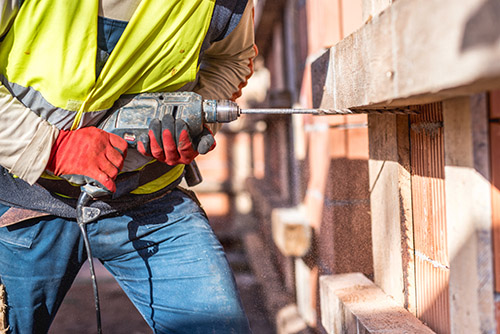 All gloves will eventually wear out and need to be replaced, especially those that are already damaged. In general, gloves worn on the hands for extended use have a relatively short lifespan and may suffer irreparable damage within just a few weeks.
All gloves will eventually wear out and need to be replaced, especially those that are already damaged. In general, gloves worn on the hands for extended use have a relatively short lifespan and may suffer irreparable damage within just a few weeks.
The service life of gloves depends on various factors, including the type of glove, the working environment in which they are used, the frequency and duration of exposure to risks in that environment, and how well the gloves are maintained. Differences in working methods also make the frequency of glove replacement relatively subjective. Therefore, when you suspect that your work gloves may need replacement, please consider these factors.

Understanding What Durability Means to You
When trying to understand the term “durability,” it should be seen as referring to “lifespan,” that is, how long you can wear the gloves before they are considered “worn out” and no longer functional. Unfortunately, this is difficult to measure objectively because there are hardly any universal tests or standards. As mentioned above, the lifespan of gloves largely depends on the nature of the work. Therefore, when choosing gloves, you should consider measurable performance qualities, such as special features like cut resistance, abrasion resistance, chemical resistance, etc.
Standards for Replacing Gloves
Check for Signs of Damage
Inspect the glove surface for visible damage, such as holes, tears, delamination—especially whether the material on the palm or fingertips is thinning or peeling—or whether the glove stitching is broken, leading to structural looseness. These serious damages require immediate replacement to avoid unnecessary trouble. There may also be internal damage that, although minor, could lead to coating wear. Thus, observe any changes in color in the coating or lining and make a judgment based on that as to whether to replace the gloves.
Workplace injuries can occur in an instant, so it’s worth taking extra time before each use to ensure you’re fully prepared.
Decline in Protective Performance
Observe whether the gloves start leaking or feel damp inside, or if cut-resistant gloves become loose or suffer fiber breakage, even losing their cut protection. Each glove has a different protective function, so when a glove loses its original performance, it must be replaced—even if there’s no visible damage. Regular replacement is advised to prevent unnecessary accidents.
Hygiene and Odor
If the inside of the gloves becomes moldy due to moisture, or if stains and odors remain even after cleaning—especially in gloves that are not breathable and worn for long periods—then the gloves are likely ineffective and need immediate replacement to avoid skin irritation or damage.
Immediate Replacement in Special Cases
If gloves come into unexpected contact with sharp objects, heavy items, or corrosive liquids, and show clear deformation or chemical corrosion, you should remove and replace them immediately.

Proper Care and Maintenance
While all gloves will eventually wear out and be discarded, you can extend their lifespan through proper care and maintenance. It is recommended to follow the manufacturer’s instructions or professional cleaning advice to care for your gloves. This helps prevent damage from improper cleaning.
Also, inspect the gloves daily—especially when they are subject to frequent misuse. Pay close attention to damaged areas. Typically, once a glove is damaged, it should be discarded decisively.
In reality, gloves should be cleaned regardless—except for disposable gloves that are intended for one-time use.

Acceptance Is Sometimes Necessary
Some gloves are designed for long-term or repeated use, while others are intended to be discarded after a single use. If you’re using disposable gloves, it’s safer to dispose of them and any materials they’ve contacted rather than attempting to clean and reuse them.
The disinfection process is often too complex for these gloves, and the material can’t withstand it. Therefore, regardless of whether the gloves show signs of wear or damage, they should be disposed of after use.
If it’s about time to replace your gloves, choose a safety expert you can trust. Your hands are among your most valuable tools, so make their protection a top priority.
Summary
Replacing your work gloves at the right time will make your job much more efficient. Ultimately, the decision of when to replace your gloves is up to you.
Aibon is committed to helping people ensure workplace safety. If you want to learn more about work gloves, or if you’re interested in purchasing work gloves, feel free to contact us—we’re here to assist you every step of the way.
How to Measure Glove Sizes – Source: AIBON
Latex gloves– Source: AIBON
Safety gloves– Source: AIBON
Working gloves– Source: AIBON

